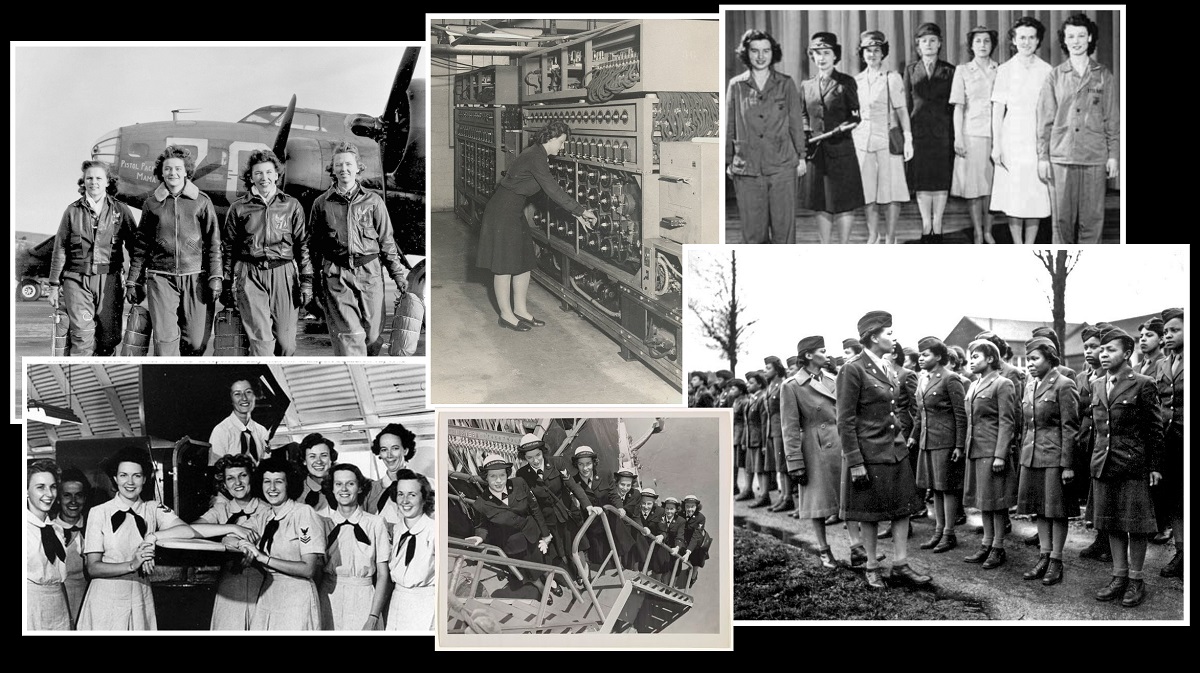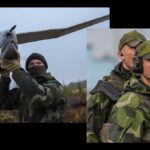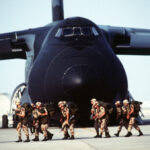
“Our lives begin to end the day we become silent about things that matter.”
Martin Luther King Jr.
Where are all the women? I’m not trained as a professional historian. But I have written about historical topics and published essays, articles, and books on historical events and people. I’ve learned a lot in the process. Over the past several years I’ve discovered just how much a distortion or omission of fact can literally alter the perception of past events, in effect changing history and ultimately impacting our understanding of it. These questions of omission and distortion are especially problematic when it comes to our collective understanding of the role women have played in the history of war and in military service. Women’s contributions are often absent or distorted, which, intentional or not, distorts our view of both the past and present.
Let’s take as an example, the vaunted history of the World War II codebreakers, who were widely credited with having helped to shorten the war by one to two years through their work. In October 1945, the U.S. Congress lauded their work; Rep. Clarence Hancock said, “I believe our cryptographers…in the war with Japan did as much to bring the war to a successful and early conclusion as any other group of men.”
The more than 10,000 women codebreakers weren’t mentioned. Yet those Army and Navy women who worked on Project Ultra actually built the Bombe machines that broke the codes and operated them at classified locations in Washington, D.C.. Their service was held prisoner behind the wall of silence their oaths required. Not one leaked the story of their contributions until the mid-1990s when, at a reunion for the Navy WAVES who built the Bombe, Vice Admiral Tunnel from the Naval Security Group Command told them they could talk about their service. What would it have been like to keep that secret all those years? Betty Robarts was 20 years old when she joined the WAVES, one of those women who helped build the massive machine that broke codes. She told me, “I only wish I could have told my Mom and Dad.”
In 1976, the U.S. Air Force announced it would begin to accept women for pilot training, stating it was the first time the Air Force would permit women to fly. There was just one problem – it wasn’t exactly truthful: women had flown in World War II. More than 25,000 women volunteered to fly with the Women Air Service Pilots (WASP), and 1,100 eventually did. Thirty years after the war, their contributions, their service and their story seemed to have been forgotten in the desire to claim milestones and firsts. The Air Force announcement about training women pilots was made without any reference to WASP contributions.
The veterans rose up to protest the Air Force announcement. The service backtracked, and suddenly the veterans found themselves popular. A number of efforts were undertaken to correct the record: the WASP was formally made part of the Air Force in 1977. The veterans received honorable discharge certificates and the WWII Victory Medal. They were also awarded the Congressional Gold Medal for their service. The Medal reads: “The first women in history to fly American military aircraft.” The WASP pilots were proud of their service. Olga Mildred “Millie” Rexroat flew with the WASP, earning her wings in class 44-7. She was the only Native American woman to fly with the WASP. In her later years she too was an advocate for supporting and preserving the legacy of WASP pilots.
Then there are articles and stories about Major Charity Adams and the 6888th Central Postal Directory Battalion, which was the only all-female, all African-American unit to deploy overseas in World War II. Their story too, has come surging to the forefront over the past several years – surprising, educating and ultimately resulting in numerous celebrations of their service. In 1995, retired Lt. Col. Charity Adams commented at a Black History Month event, “Well, it certainly has taken a long time for us to be remembered.”
When popularizers write about women in war, nurses are often where the story starts and where it ends. But this is a woefully incomplete and inadequate picture. Of course nurses have made and continue to make important contributions to the health and safety of the fighting force. But there were then, and are now, women in a variety of roles serving in and around military units. There were women pilots and postmasters, codebreakers and telephone operators, clerks and assistants. Historically, their numbers may have been small, but they are not unimportant. To read some popular articles, you would never know that women made these contributions.
And therein lies the rub. In 2021, accomplished British military historian Lyn Macdonald passed away. She was passionate about recording untold stories of the Great War, interviewing some 3,000 veterans, and reading the diaries and letters of many more. Her books about WWI told the stories of ordinary soldiers, nurses, and others. She didn’t just write about politicians and statesmen, generals and battles. She told stories about ordinary people, ones that had been overlooked or forgotten. She once commented that their stories left “a great unhewn seam of memory and information on the war.” Renowned British military historian Antony Beevor agreed, noting that historians should be writing about “Everyone caught up in war, including of course women and children.”
Absent the richness of these additional stories our understanding of wartime and military strategy and operations is incomplete. As a military officer I felt I should have learned more of these ‘other’ stories, those about the home front and wartime industry, the effects of world conflict on the everyday life of Americans, and its impacts on average people who lived through those times. Without these stories and perspectives, the chronicle is incomplete.
When we dismiss some questions or topics as unimportant or unworthy of accurate historical inquiry, we miss opportunities to broaden our collective historical narratives.
I’m a better person, with a more complete view of my own place in history, for having learned more about the WAVES, the WASP, the WACs, the SPARs, the Women Marines, and the women who fought in the resistance overseas, reported on operations from the front lines, served on the Homefront in the United States, and more. A USO piece from 2021 states “These 5 Heroic Women of World War II Should be Household Names.” I obviously still have much to learn. I only knew about one of them, Mae Krier, who worked in Seattle as a Rosie the Riveter during the war. I’m fortunate I was able to meet her at a veteran’s event last year.
When we dismiss some questions or topics as unimportant or unworthy of accurate historical inquiry, we miss opportunities to broaden our collective historical narratives. Take for example, an experience I had on a battle staff ride at Normandy. As a small group of us stood near the gravesites of the Roosevelt brothers, I asked if there were any women buried at Normandy. The professional historian leading our group shrugged and replied, “Probably just a couple of donut dollies.” That wasn’t true. I interpreted his guess and dismissal as an admission that the question wasn’t important enough to know the answer or bother finding out. But in fact, there are four American women buried in Normandy. Three are enlisted soldiers from the 6888th Central Postal Battalion who died in a vehicle accident on July 8, 1944. It may not be that this fact is widely known, but it is knowable – and surely these women deserved more than a handwave and a guess.
Learning these veterans’ history is also important for a cultural reason – many of the women I’ve read about (and written about) were real trailblazers, role models, and significant for what they accomplished in each of their fields despite the time in which they lived, the societal norms and the cultural barriers they faced. We need to have them in front of us, for their example, their strengths, and because they never gave up.
In January 2021, a high school senior wrote an opinion piece for the Washington Post asking, “So, did women just not exist?” She was referring to the near absence of women in her American history textbook. In an admittedly unscientific survey, she asked a number of her classmates to name important women in American history. Nearly half of those she interviewed couldn’t name even one.
One could argue that this is because the culture and institutions long made it difficult for women to achieve success in public life or business (or in the military). But it simply isn’t true that they weren’t there. Last year I spoke to an Air Force officer who served two tours at the U.S. Air Force Academy where she taught English. She said to me, “I never taught anything about women who served in the military or used any books by women. It simply didn’t occur to me to do so. I’m going to fix that.”
We cannot be silent about the contributions of half of the population in this country to the American ideals and values we hold dear. Next generations are counting on civics and history education to show them not only what has been hard fought and won but also what is possible to achieve in life. They should not be discouraged by attempts to reinforce stereotypes through omission or downplaying the contributions of women and minorities.
That high school senior said, “Here in 2021, young women are told we can make history and achieve anything. But that’s difficult to believe when history curriculums marginalize or ignore women’s accomplishments. When these facts are omitted from compulsory education, it becomes more difficult for students to see how gender-based inequities remain entrenched – which in turn will make it harder for us to escape them.”
The significance of teaching history that includes women isn’t just important in high school or university courses. Military education must do better as well. Complete and inclusive narratives, can only lead to greater understanding of the past and improved preparation for the future. Would that high school senior be interested in joining the Army? That may well depend on what she’s learned about the history of women’s service, if anything. Otherwise she may be skeptical. I know I would be. Getting the complete story and getting it right matters for all of us. Silences and misrepresentation wrought by omission and distortion harm us all.
Mari Eder is a Featured Contributor to WAR ROOM. She is a retired major general in the U.S. Army and an expert in public relations and strategic communication.
The views expressed in this article are those of the author and do not necessarily reflect those of the U.S. Army War College, the U.S. Army, or the Department of Defense.
Photo Description: Clockwise from Top Left – These four female pilots leaving their ship at the four engine school at Lockbourne are members of a group of WASPS who have been trained to ferry the B-17 Flying Fortresses; The Navy women worked in three shifts a day constructing the many gears and gadgets that make up the Bombes—the machines used to decrypt the German Enigma cipher. A separate unit of women were tasked with the challenging job of running the finicky machines; For a publicity photograph, the women of Company H, 2d Headquarters Battalion, Henderson Hall, model the various work and dress uniforms worn by women Marines during the course of World War II. From left are PFC Florence Miller, Cpl Lois Koester, Cpl Carol Harding, Sgt Violet Salela, Cpl Grace Steinmetz, Cpl Rose Mazur, and PFC Mary Swiderski; Women’s Army Corps Maj. Charity Adams, 6888th Central Postal Directory Battalion commander, and Army Capt. Mary Kearney, Alpha Company commander, inspect the first soldiers from the unit to arrive in England, Feb. 15, 1945; SPARs Visit Combat Vessel circa 1942-1946; A file photograph dated July 24, 1945 shows the first group of WAVES to report for duty with VR-12 at Naval Air Station, Quonset Point, R.I.
Photo Credit: Clockwise from Top Left – U.S. Air Force photo; National Security Agency photo; USMC photo; U.S. Army photo; U.S. Coast Guard photo; U.S. Navy photo




